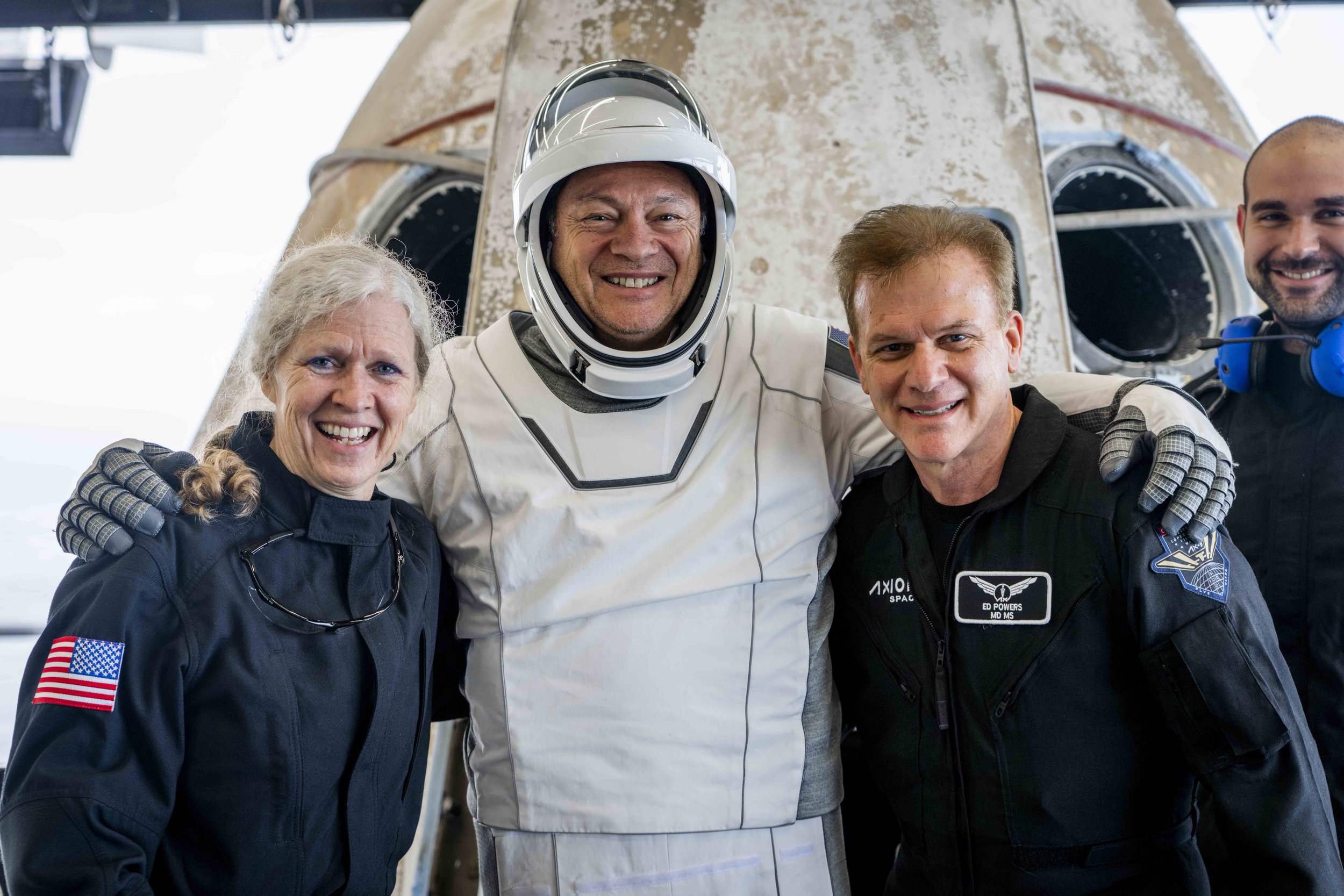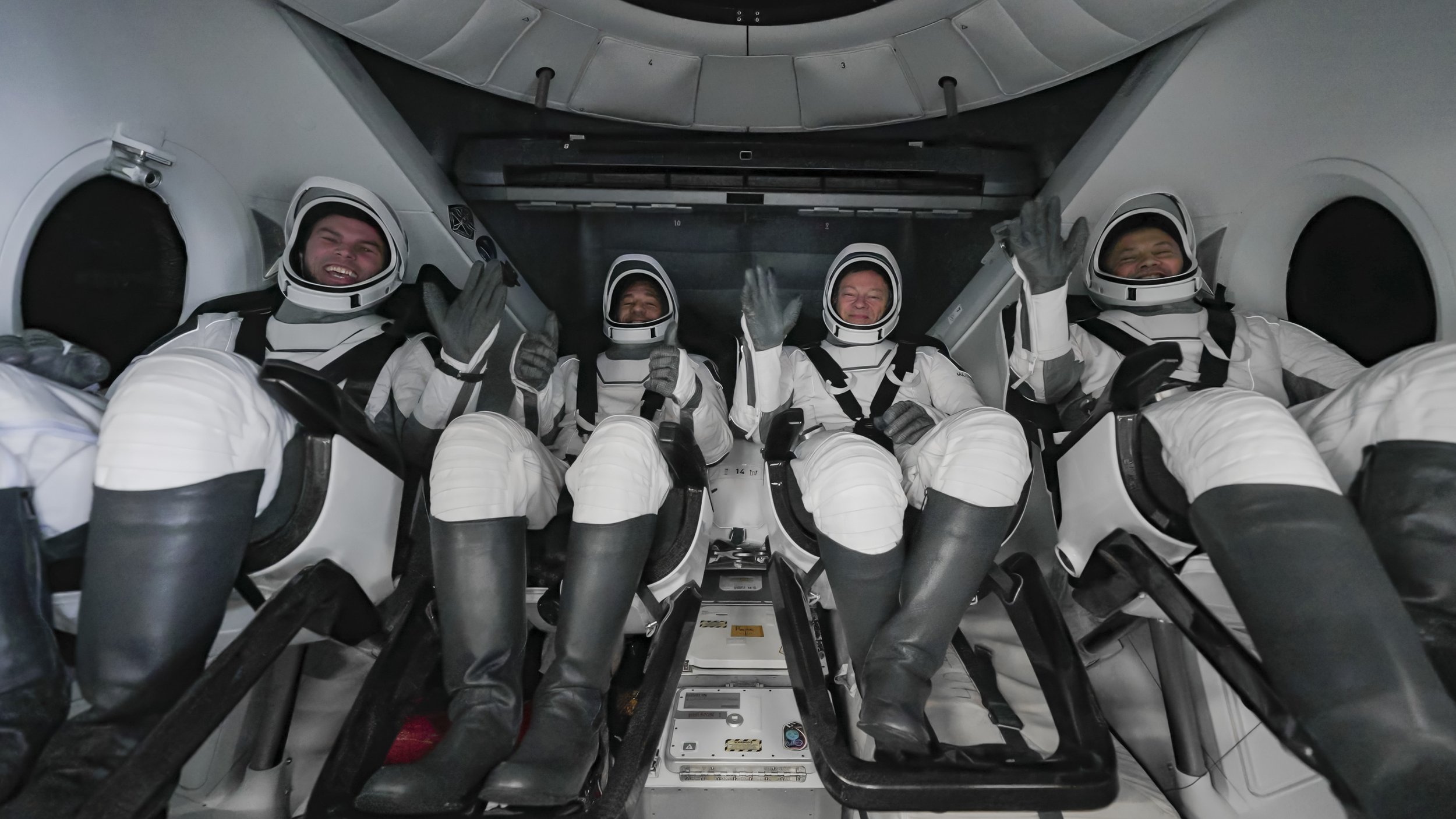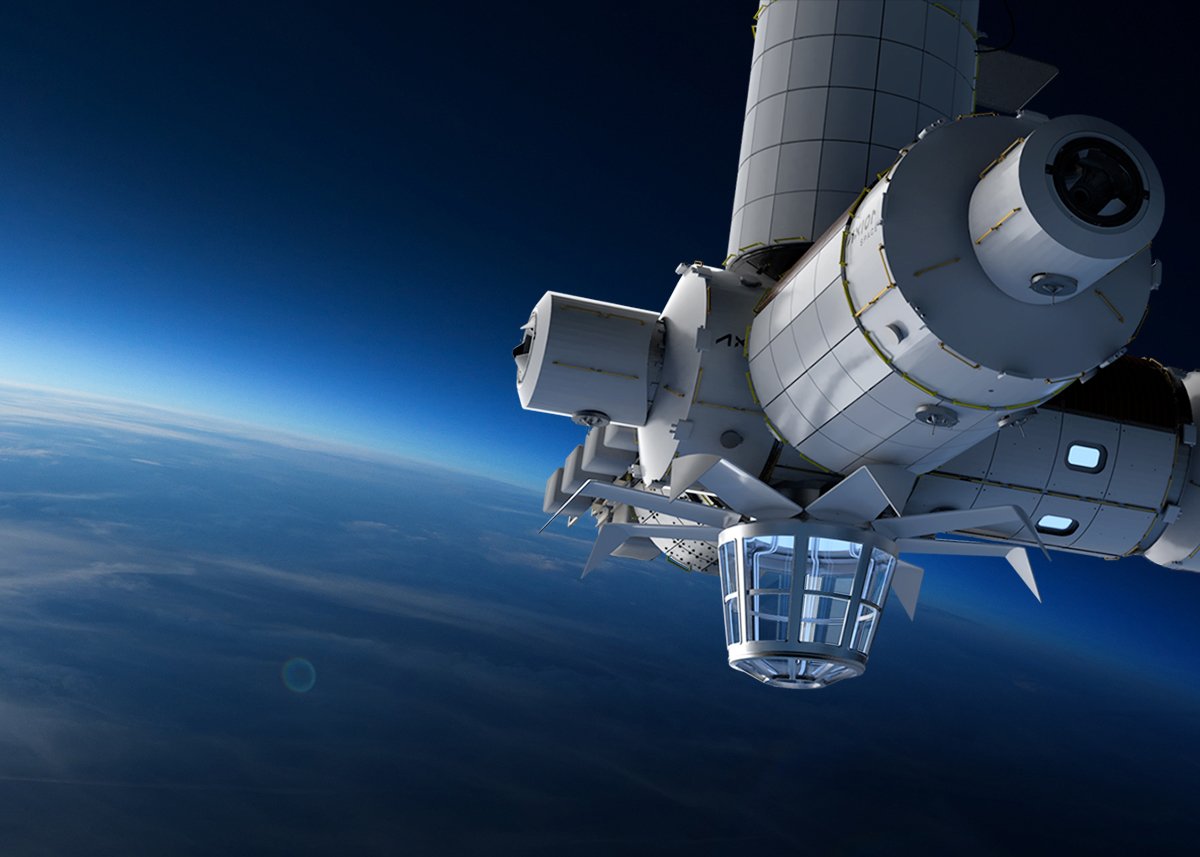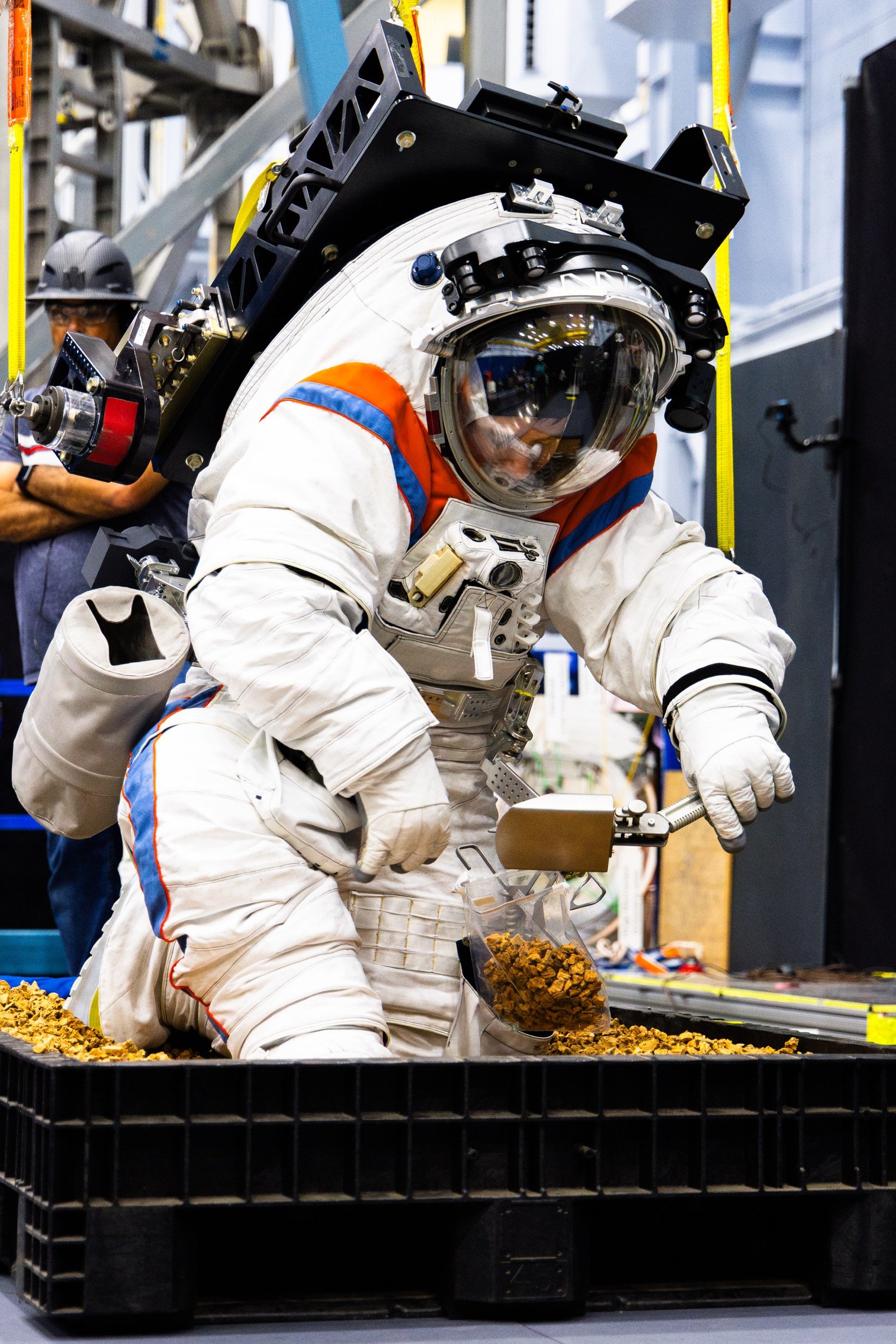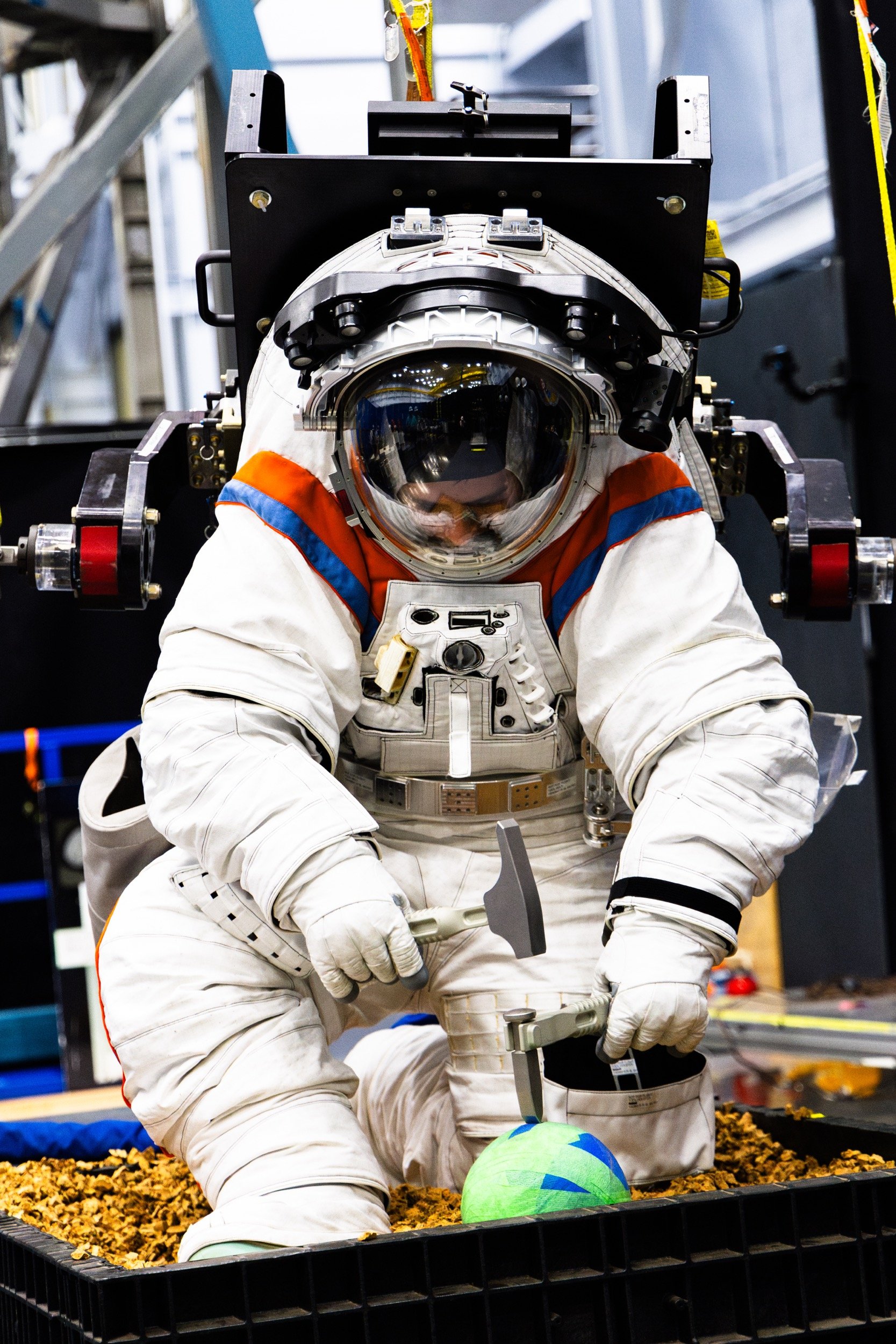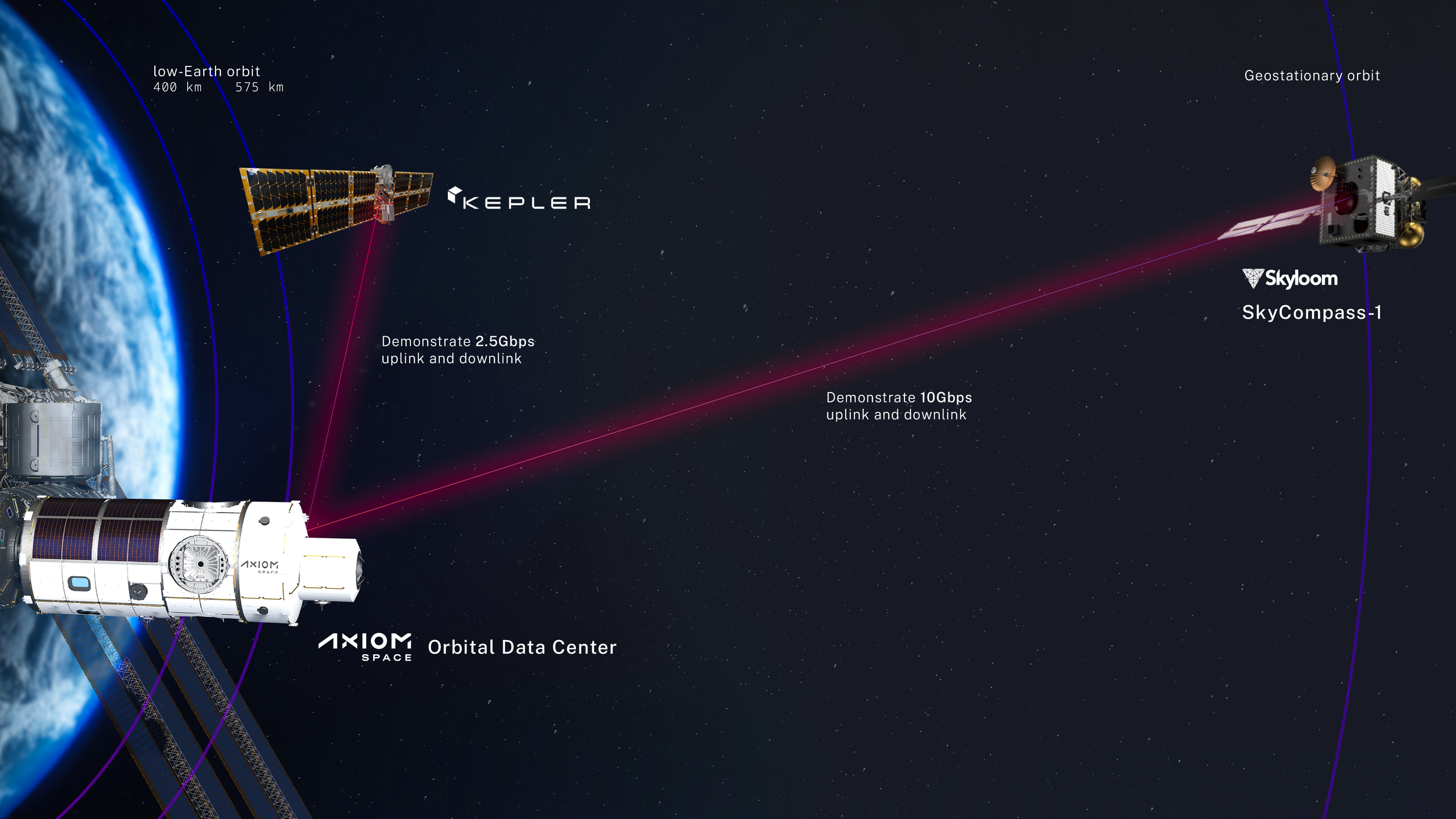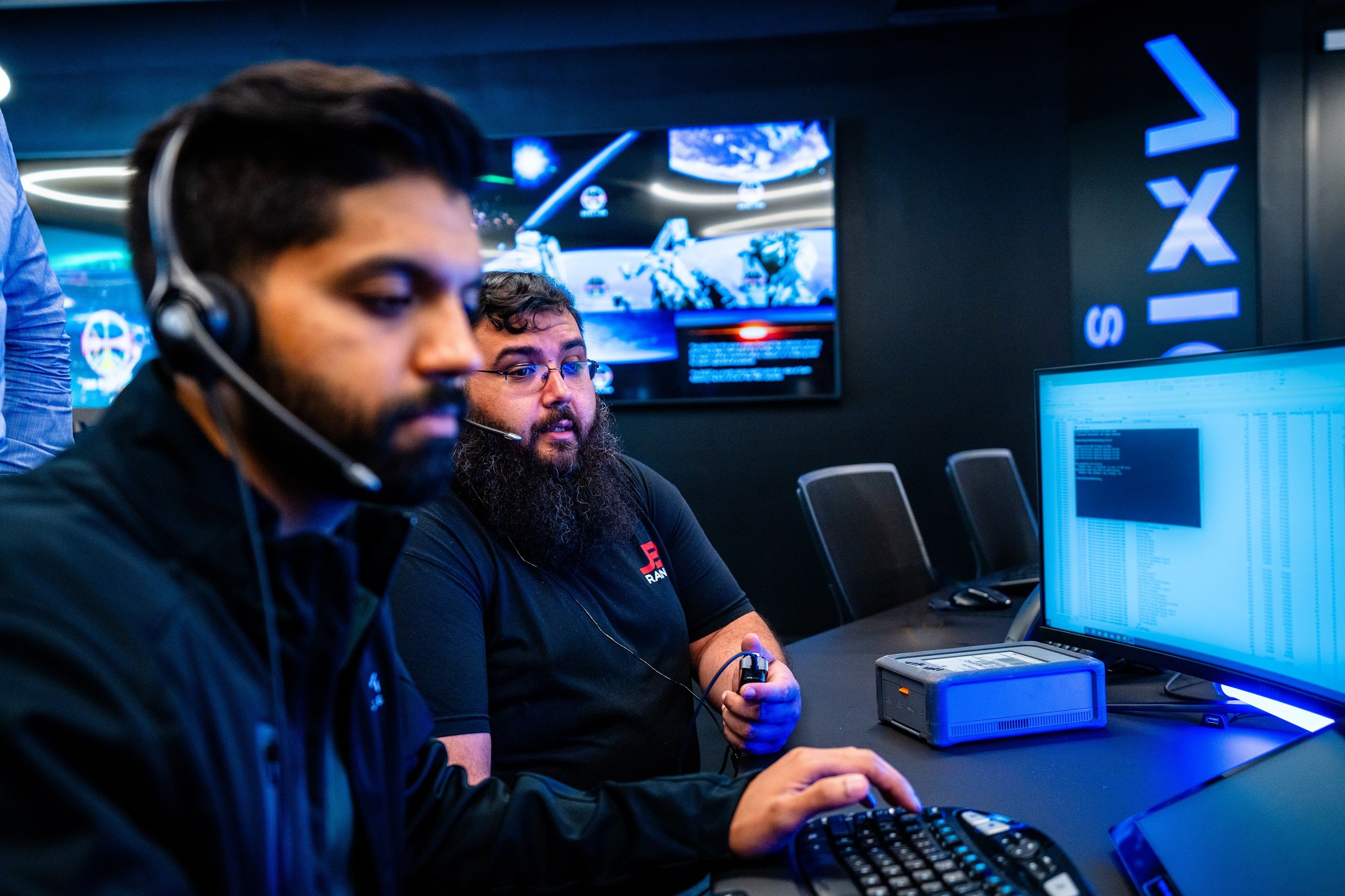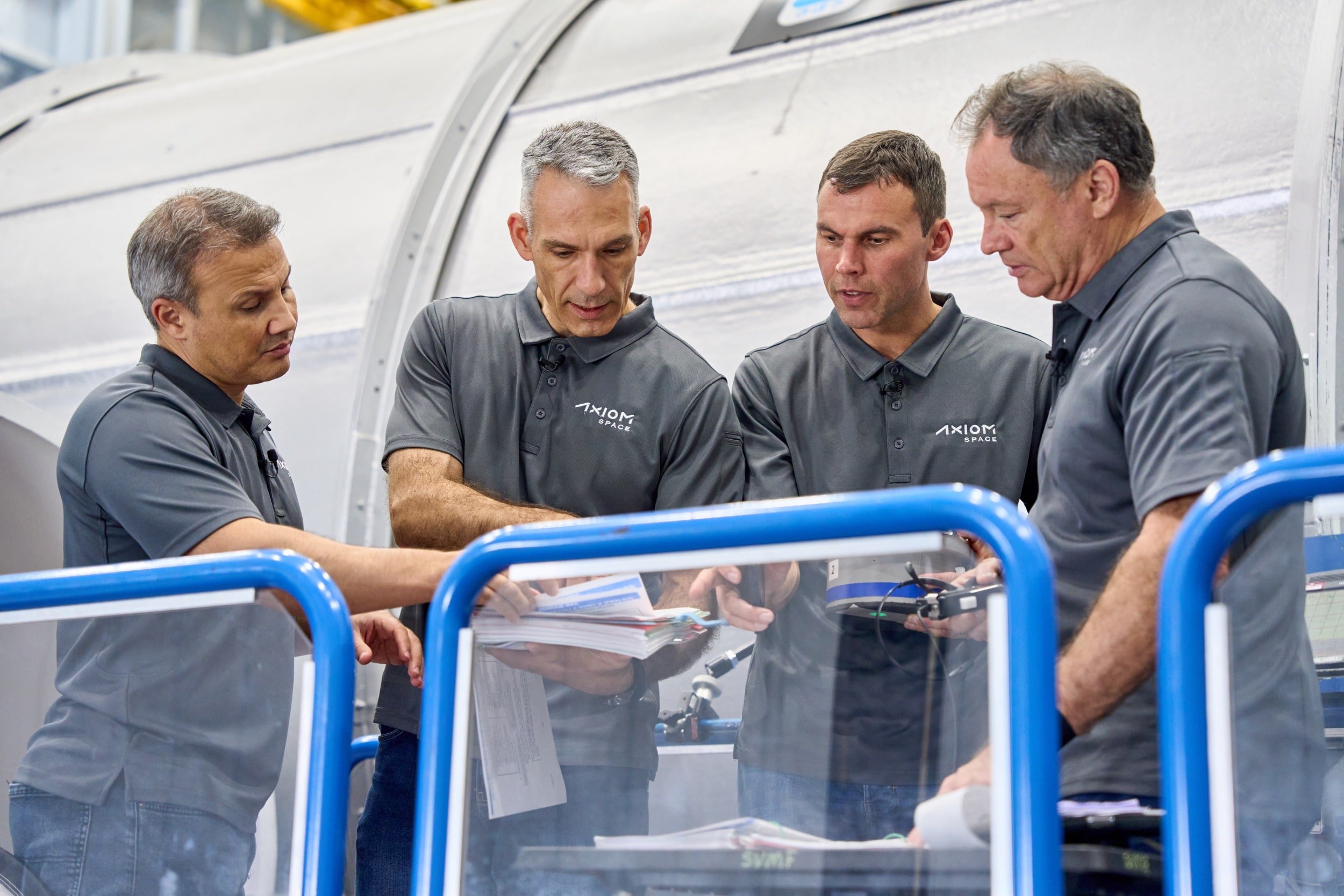18 highlights from an 18-day mission on the International Space Station
1. The Axiom Mission 3 (Ax-3) crew spent 18 days, about 435 hours, aboard the International Space Station (ISS) and orbited Earth approximately 346 times, covering about 9.1 million miles.
Ax-3 Commander Michael López-Alegría, Pilot Walter Villadei, Mission Specialist Alper Gezeravcı, and Mission Specialist Marcus Wandt, embarked on their awe-inspiring journey to the orbiting laboratory at 4:49 p.m. ET on Jan. 18. They flew to space aboard a SpaceX Dragon, launched by a Falcon 9 rocket from NASA’s Launch Complex 39A at the Kennedy Space Center in Florida.
After approximately 36-hours of spaceflight, the Dragon spacecraft and Ax-3 crew docked with the International Space Station at 5:42 a.m. ET on Jan. 20, while soaring over the Pacific Ocean.
Eighteen days later, the crew undocked from the ISS at 9:20 a.m. ET on Feb. 7 to begin their homeward journey, carrying with them a lifetime of unforgettable memories and invaluable scientific data.
The Ax-3 crew aboard SpaceX’s Dragon spacecraft soars over the Pacific Ocean, prior to docking with the ISS on Jan. 20.
2. Longest Axiom Space private astronaut mission
The Ax-3 mission holds the record as the longest Axiom Space Private Astronaut Mission (PAM) to the ISS. With 18 days docked to the station and a spaceflight duration of nearly 22 days. Axiom Mission 1 (Ax-1) concluded after 17 days.
These commercial missions are building the human experience, paving the way for future human spaceflight activities in low-Earth orbit (LEO).
The Ax-3 crew bonds over the views of our home planet from the cupola.
3. Ax-3 was the first all-European commercial astronaut mission to the space station
In a historic venture, three countries – Italy, Türkiye, and Sweden through the European Space Agency (ESA) – united for Ax-3, with Axiom Space’s Chief Astronaut and Commander Michael López-Alegría leading the commercial mission, representing both the U.S. and Spain as a dual-citizen. The Ax-3 pilot was Italian Air Force Col. Walter Villadei, and the two mission specialists were Alper Gezeravcı of Türkiye and ESA project astronaut Marcus Wandt of Sweden. This all-European commercial astronaut mission showcased an unprecedented level of collaboration. As we unite to explore, we also celebrate the power of bridging cultural divides to advance human knowledge and prosperity.
Ax-3 astronauts proudly represent their country’s flags while aboard the Space Station.
4. Ax-3 was the first commercial spaceflight mission made up of government and ESA-sponsored national astronauts
Ax-3 Pilot Walter Villadei and Mission Specialist Alper Gezeravcı were both government-sponsored astronauts with Villadei representing the Italian Air Force and Gezeravcı representing Türkiye. Mission Specialist Marcus Wandt represented Sweden as an ESA-sponsored project astronaut. Together, they proved that space knows no boundaries — where nations converge and unite to explore.
Ax-3 represents a ground-breaking venture that provides new pathways to access to the orbiting laboratory and perform microgravity research, technology demonstrations, and outreach activities.
The Ax-3 crew shares a moment of camaraderie during their historic mission.
5. Mission Specialist Marcus Wandt blazed a trail as ESA’s first project astronaut
ESA partnered with Axiom Space to send its first project astronaut to space, Marcus Wandt of Sweden. ESA’s project astronaut concept was introduced during its astronaut selection in 2022.
Project astronauts are hired as ESA staff on a fixed-term contract and have posts that are linked to a specific flight or project. These assignments can include missions of opportunity where ESA or its Member States want to send a European to space. The length of a project astronaut’s contract is directly connected to the duration of their mission.
Ax-3 Mission Specialist Marcus Wandt is seen with the Swedish flag high above Earth.
6. First Turkish astronaut went to space
For Türkiye, Ax-3 represents a beacon of national pride as Mission Specialist Alper Gezeravcı etched his name in history as the first-ever Turkish astronaut. Türkiye sent the first Turkish astronaut to space as part of a larger effort to expand the country’s space exploration capabilities and establish a national human spaceflight program. As a fighter pilot with the Turkish Air Force, Gezeravcı has 15 years of flying experience on multiple aircraft and served as a captain with the Turkish Airlines for seven years. Through this mission, Gezeravcı inspired generations and fueled Türkiye’s pursuits in human spaceflight and microgravity research.
Ax-3 Mission Specialist Alper Gezeravcı displays the Turkish flag in the cupola to celebrate the nation’s historic mission.
7. Italy establishes role in the new era of commercial spaceflight
Italy’s involvement in Ax-3 has not only fortified its rich legacy in space exploration but also paved the way for groundbreaking scientific and technological advancements. This whole-of-country endeavor, led by the Italian Air Force, and supported by governments, institutions, and industries, is fueling Italy’s willingness to strengthen its role as a player in the burgeoning space economy.
Ax-3 provided Italy with a platform to seize opportunities presented by the commercial space industry. This has enabled Italy to accomplish significant goals in research and innovation, while continuing promoting the nation’s commitment towards safe and effective access to space.
Ax-3 Pilot Walter Villadei poses in front of the Italian flag as the country’s eighth astronaut to orbit Earth.
8. Ax-3 commander becomes the first astronaut to fly in SpaceX’s Dragon spacecraft for a second time
Michael López-Alegría commanded Axiom Space’s first private astronaut mission to the ISS and Ax-3 marked his second flight aboard a SpaceX Dragon, making him the first astronaut to have this unique distinction.
Ax-3 Commander Michael López-Alegría shows excitement as the first SpaceX Dragon spacecraft “frequent flyer.”
9. Ax-3 astronauts performed 54 different experiments
The Ax-3 crewmembers performed scientific experiments and demonstrations in LEO that were of high national importance. During the mission, they successfully completed a total of 54 research activities — to include 39 conducted aboard the space station — focusing on life, physical and Earth science, human research, and technology demonstrations.
Axiom Space partnered with many scientific organizations to continue understanding the effects of spaceflight on the human body, as well as explore opportunities of applied research in space to benefit health and medical treatments on Earth.
ESA’s first project astronaut, Ax-3 Mission Specialist Marcus Wandt, completes 80 hours of microgravity research and technology demonstrations during the mission.
10. Crew conducted a total of 28 outreach and media engagements
The Ax-3 crew actively engaged with the global community through 28 media and outreach events. These interactions involved news outlets, government officials, organizations, and key stakeholders from their countries. Notably, nine of these engagements were dedicated to educating and inspiring hundreds of students worldwide.
Ax-3 and Expedition 70 crew joins for a farewell ceremony, solidifying the completion of months of preparation and weeks of important work conducted on the ISS.
11. SpaceX Dragon carrying the Ax-3 crew returned to Earth with 577 pounds of payloads and cargo
The Ax-3 crew returned to Earth, bringing with them a substantial 577 pounds of payloads and cargo. This included over 60lbs of research hardware and biological samples, each with its own potential to unlock new scientific discovery.
Among the returned payloads were ‘mini brains’ or neural organoids which could provide valuable insights into neurodegenerative diseases. Also included were samples from the crew, which will aid researchers in understanding changes in genetic and molecular activity associated with microgravity. This knowledge is crucial for understanding how the human body adapts to space.
The payloads contained ovarian cells, which could help illuminate hormonal effects on reproductive cycles. Specially designed suits that monitor astronaut physiology were also part of the haul, capable of enhancing crew health and safety during future space explorations.
In addition, plant seedlings were returned, which could reveal their stress responses, benefiting both Earth-based agriculture and potential “space farming” on Mars. Algal samples were included, with researchers now planning to investigate the genetic effects of spaceflight, which could contribute to the development of advanced environmental control systems for future spacecraft.
This diverse and significant collection of payloads promises to advance our understanding of space and its effects on various forms of life, paving the way for groundbreaking scientific and technological advancements.
The Dragon spacecraft awaits recovery in the Atlantic Ocean shortly after the Ax-3 crew’s return to Earth.
12. First time studying metastatic breast cancer organoids on ISS
Led by the Sanford Stem Cell Institute, the Ax-3 crew conducted a study on metastatic breast cancer (breast cancer that spread to other parts of the body), by investigating 3D structures called organoids — cancer organoids from patients with a rare and aggressive form of breast cancer flew for the first time on Ax-3. The research conducted during the mission showed that the organoids, which included a bone marrow component to model the immune system, tripled in size in microgravity compared to growth rates seen on the ground. The results from this project, which has previously flown on Ax-1, Ax-2, and now Ax-3, are helping to identify a cancer “kill switch” (an RNA-editing enzyme) that can prevent cancers from growing and multiplying. The suite of experiments on Axiom Space missions are testing drugs on orbit that are FDA-approved for cancer, as well as a new cancer drug that is under development.
The team plans expanded studies on upcoming Axiom Space missions to continue this important work to accelerate understanding of the cancer disease process and develop drugs that can be used to treat patients in need.
Ax-3 Pilot Walter Villadei completes important research to benefit humans on Earth.
13. ItAF conjunction warning system demonstrated on orbit for first time
Developed by the Italian Air Force (ItAF), the ISOC system (Italian Space Operations Centre) provides an updated space object catalogue and state-of-the-art algorithms for detecting potential events such as collisions. This system was operated in space for the first time during the Ax-3 mission as a proof-of-concept demonstration, showcasing how the system could provide near real-time collision warnings with minimal Earth ground support or even autonomously. The Ax-3 crew also tested the capability to monitor solar activity and report onboard events related to space weather by means of the ISOC web portal.
Keeping Earth’s future in focus while maintaining humanity’s presence in space necessitates next-generation technology to ensure safety while orbiting approximately 254 miles above the planet.
14. Türkiye brought its agricultural endeavors to space
Advanced genetic editing techniques were applied to plants to explore how altering the plant’s stress responses could improve agricultural practices on Earth, in space, or on other terrestrial bodies.
Microalgae’s response to microgravity and hardware that can culture it in space could help develop new life support systems, food, and even fuel for future space exploration applications.
This work builds on previous microgravity investigations showing how microgravity affects the growth, movement and genetics of plants, and could provide valuable insights into plant adaptation to extreme environments and help develop more resilient crops for agriculture.
Ax-3 Mission Specialist Alper Gezeravcı grows future possibilities for life in LEO.
15. Research was conducted to better understand formation of proteins implicated in Alzheimer's disease
Beta amyloid proteins, implicated in Alzheimer’s Disease, were ‘activated’ for different lengths of time on orbit, allowing researchers to understand how microgravity affects the folding and aggregation of the proteins over time in ways not possible on Earth. This experiment, promoted by Italian Space Agency (ASI), could provide insight into the formation of these proteins in neurodegenerative disorders and offer new avenues for therapeutic development.
Ax-3 Pilot Walter Villadei works with the Minus Eighty-Degree Laboratory Freezer (MELFI) used to store research samples.
16. Progress made on understanding brain activity in space
During the Ax-3 mission, Mission Specialist Marcus Wandt documented his stress levels and stress recovery rate, tested his cognitive performance, and monitored his brain activity with a headcap that can record neural activity. Cortivision, the company that created the headcap, is developing innovative applications to analyze neural activity in space and on Earth using functional near infrared spectroscopy (fNIRS). Using the fNIRS cap aboard the ISS helps researchers better understand the impact of microgravity on brain activity and how to optimize human health and performance of astronauts on missions beyond Earth.
Learn more about this Ax-3 study from Axiom Space Chief Scientist Dr. Lucie Low and Cortivision Chief Operating Officer Wojciech Broniatowski, here.
Ax-3 Mission Specialist Marcus Wandt wears the fNIRS cap to study his neural activity.
17. GiGi became a second-time flyer
Axiom Space and Build-A-Bear Workshop partnered for a second time to fly a furry fifth crew member alongside the Ax-3 astronauts. The teddy bear, named GiGi, took flight a second time, as the Ax-3 mission’s zero-gravity indicator wearing Axiom Space’s next-generation spacesuit. As the fifth crewmember of Ax-3, GiGi’s mission was to inspire children around the world to learn about space and consider careers in STEAM.
Not only was Commander López-Alegría a second-time flyer in SpaceX’s Dragon spacecraft, so was the Ax-3 zero-g indicator, GiGi.
18. Ax-3 represented important milestones for Italy, Türkiye, and Sweden
Ax-3 represented an important milestone for Türkiye as the nation commemorated the centennial anniversary of the Turkish Republic on October 29, 2023. On March 28, 2023, the Italian Air Force celebrated its centennial anniversary as one of the oldest air forces in the world.
Sweden celebrated five centuries as an independent nation on June 6, 2023. Marcus Wandt became the second Swedish ESA astronaut in history to fly to the space station, embodying opportunity and freedom to explore the unknown.
The Ax-3 astronauts share excitement as they prepared to embark on their journey to space.









